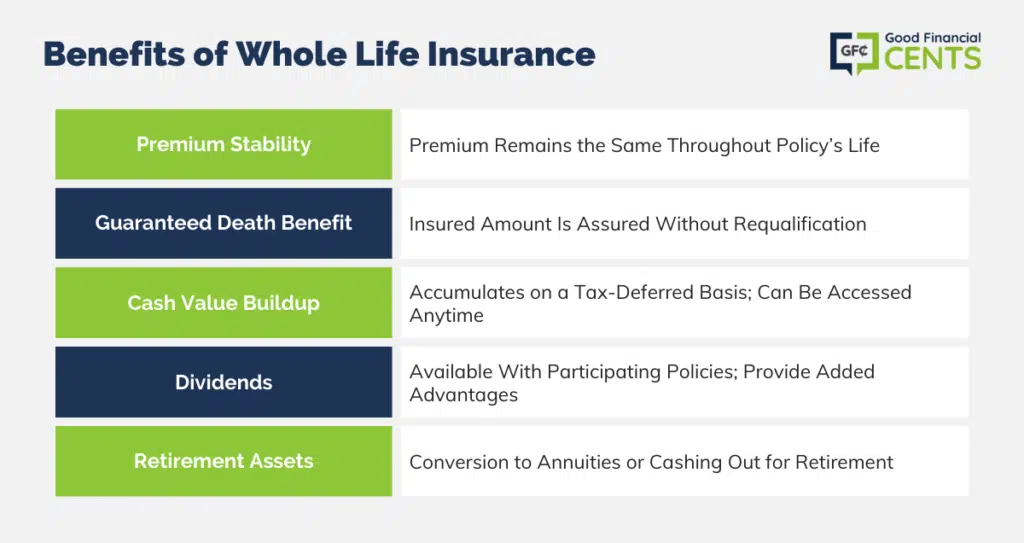What to Do After a Car Accident
In the aftermath of a car accident, the adrenaline coursing through your veins can make it difficult to think straight. However, it’s crucial to stay calm, ensure your safety, and follow these steps to protect your rights:
1. Stay Calm and Check for Injuries
In the immediate aftermath of a collision, it’s natural to feel disoriented and overwhelmed. However, it’s imperative to stay calm and assess the situation. First, check yourself for injuries. Are you bleeding? Do you have any pain? If so, seek medical attention immediately. Then, check your passengers and anyone else involved in the accident for any visible injuries.
If you’re not seriously injured, remain in your vehicle and put your hazard lights on to warn other drivers. You may also want to take pictures of the accident scene, including any damage to your car and the other vehicle(s) involved. This can serve as valuable evidence later on.
Next, move your vehicle to a safe location if possible. If your car is blocking traffic or poses a hazard, pull it over to the side of the road. However, if you suspect someone may be seriously injured, it’s best to leave the cars in place until emergency responders arrive.
As you check for injuries, remember to remain calm and collected. Panicking will only make the situation worse. Instead, focus on assessing your own condition and that of your passengers. And if you suspect any serious injuries, don’t hesitate to seek medical attention.
2. Exchange Information
Once you’ve checked for injuries and moved your vehicle to a safe location, it’s time to exchange information with the other driver(s) involved in the accident. This includes your name, address, phone number, insurance information, and license plate numbers. You should also get the names and contact information of any witnesses who saw the accident.
It’s important to be polite and cooperative during this process, even if you’re feeling angry or upset. Remember, you both want to get the situation resolved as quickly and smoothly as possible. So, try to stay calm, answer questions honestly, and provide all the necessary information.
If the other driver is being aggressive or uncooperative, don’t engage with them. Instead, call the police and let them handle the situation. Your safety and well-being should always be your top priority.
3. Report the Accident to the Police
In most cases, you’re legally required to report a car accident to the police. This is especially true if there are any injuries, property damage, or if you suspect the other driver was intoxicated or driving recklessly.
When you report the accident, be sure to provide the police with all the information you have, including the names and contact information of the other driver(s) involved, the location of the accident, and any witnesses who saw what happened.
The police report will serve as an official record of the accident. It can be helpful when filing an insurance claim or pursuing legal action later on.
After a Car Accident: What to Do?
If you’ve ever been in a car accident, you know that it can be a frightening and stressful experience. In the aftermath of a crash, it’s important to stay calm and take the necessary steps to protect yourself and others. Here’s a step-by-step guide on what to do after a car accident:
Step 1: Stay Calm and Check for Injuries
In the aftermath of a car accident, it’s important to stay calm and assess the situation. Check for injuries to yourself and others. If you or anyone else is injured, call 911 immediately.
Step 2: Move to a Safe Location
If possible, move your vehicle to a safe location. This will help prevent further accidents and allow you to exchange information with the other drivers. If you’re unable to move your vehicle, stay inside and wait for help to arrive.
Step 3: Call the Police
Even if the accident is minor, it’s important to call the police. The police will create a report of the accident, which can be helpful if you need to file an insurance claim.
Step 4: Exchange Information
Once you’ve called the police, exchange information with the other drivers involved in the accident. This includes your name, address, phone number, insurance information, and license numbers.
Step 5: Take Photos
If possible, take photos of the accident scene. This will help you document the damage and provide evidence to your insurance company.
After a Car Accident: What to Do?
Being involved in a car accident can be a traumatic and confusing experience. The aftermath of an accident can be overwhelming, leaving you unsure of what to do next. Here’s a step-by-step guide to help you navigate the immediate aftermath of a car accident:
Step 1: Stay Calm and Ensure Safety
Amidst the chaos, it’s crucial to remain calm and prioritize your safety. Turn on your hazard lights, move your vehicle to the side of the road if possible, and check for any injuries. If you or anyone else is injured, seek medical attention immediately.
Step 2: Call the Police
Contact the police to report the accident and request a police report. This report will serve as official documentation of the incident, including details such as the time, location, and parties involved. The police can also assist with traffic control and investigate the cause of the accident.
Step 3: Gather Information
Once the police have arrived and the scene is secure, gather as much information as possible. Exchange contact information with the other driver(s) involved, including their name, address, phone number, and insurance policy details. Note down the make, model, and license plate numbers of all vehicles involved. Also, take photographs of the accident scene and any visible damage to vehicles and property.
Step 4: Report the Accident to Your Insurance Company
You should report the accident to your insurance company as soon as possible to initiate the claims process. Provide them with all the information you have gathered, including the police report number and any witness statements.
Step 5: Seek Medical Attention
Even if you don’t feel injured immediately after the accident, it’s crucial to seek medical attention as soon as possible. Some injuries, such as whiplash, may not manifest themselves right away. A medical examination will help identify and document any injuries, ensuring you receive proper treatment.
After a Car Accident: What to Do
After the shock and adrenaline of a car accident subside, it’s crucial to take the necessary steps to protect your well-being and legal rights. Here’s a guide to help you navigate the aftermath of an accident and ensure you receive the support and compensation you need.
Step 1: Check for Injuries
The first priority is to ensure your safety and the safety of others involved. Check yourself and any passengers for injuries, no matter how minor they may seem. If possible, move to a safe location away from traffic. Call for emergency medical assistance immediately if anyone is seriously injured.
Step 2: Contact the Police
Reporting the accident to the police is essential, even if it appears to be minor. The police will create an official record of the incident, which can serve as valuable evidence later on. Be sure to provide them with accurate information and cooperate fully with their investigation.
Step 3: Exchange Information
Gather essential details from the other driver(s) involved, including their names, contact information, insurance details, and license plate numbers. Be sure to ask about any witnesses or passengers in their vehicle. Exchange this information promptly and courteously.
Step 4: Document the Scene
Take photos of the accident scene, including the damage to vehicles, road conditions, and any visible injuries. If possible, sketch a diagram of the accident to help illustrate the events. Gather the names and contact information of any witnesses who may have seen the accident.
Step 5: Seek Medical Attention
Even if you don’t feel injured immediately after an accident, it’s important to seek medical attention as soon as possible. Some injuries, such as whiplash or internal bleeding, may not manifest until hours or even days later. A medical professional can diagnose and treat any injuries and provide documentation for insurance purposes.
Step 6: Notify Your Insurance Company
Inform your insurance company about the accident as soon as possible. They can assist you with filing a claim, arranging for repairs to your vehicle, and providing legal representation if necessary. Be honest and accurate when describing the events of the accident.
Step 7: Consult an Attorney
If you have sustained serious injuries or the other driver is disputing liability, it may be wise to consult with an attorney. They can help you protect your rights, negotiate with insurance companies, and pursue legal action if necessary.
After a Car Accident: What to Do
In the aftermath of a car accident, it’s easy to feel overwhelmed. The adrenaline is pumping, and your mind is racing. But it’s important to stay calm and take the right steps to protect yourself and your interests.
Here’s a step-by-step guide to what you need to do after a car accident:
Step 4: Document the Accident
Documenting the accident is crucial for insurance purposes and establishing a clear record of what happened. Start by taking plenty of photos of the damage to both vehicles, the scene of the accident, and any visible injuries.
Note the location and time of the accident, as well as any witnesses who may have seen what happened. If possible, get their contact information. Also, note any physical pain or discomfort you’re experiencing, even if it’s minor.
Here are some additional tips for documenting the accident:
**Take lots of photos.** The more photos you take, the better. This will help you remember the details of the accident and provide evidence to the insurance company.
**Be specific in your notes.** Write down everything you can remember about the accident, including the date, time, location, and weather conditions. Also, note any injuries or damage to your vehicle.
**Get witness information** If there were any witnesses to the accident, get their names and contact information. They may be able to provide valuable information to the insurance company or the police.
**Report the accident to the police.** In most states, you are required to report any accident that results in injuries or property damage to the police. The police will create a report that can be used as evidence in the event of a dispute.
**Hire an attorney.** If you are seriously injured in a car accident, you may want to consider hiring an attorney. An attorney can help you file a claim with the insurance company and negotiate a fair settlement.
By following these steps, you can help protect yourself and your interests after a car accident. Remember, it’s always better to be prepared than sorry. So, take the time to learn what to do after a car accident and be ready in case the worst happens.
After an Car Accident: What to Do
In the aftermath of a car accident, it’s crucial to remain calm and take the necessary steps to ensure your safety and well-being. Here’s a comprehensive guide to help you navigate the immediate actions you should take:
Step 1: Ensure Safety
First and foremost, prioritize your safety by putting on your hazard lights, checking for any injuries, and getting out of harm’s way if possible. If you’re unable to move, call for emergency assistance immediately.
Step 2: Exchange Information
Once you’re safe, gather essential information from the other parties involved in the accident, including their name, contact details, insurance information, and license plate numbers. Take photos of the accident scene to document the damages.
Step 3: Report the Accident
Legally, it’s essential to report the accident to the police. They will provide an accident report, which serves as official documentation of the incident. This report will be crucial for insurance claims and potential legal proceedings.
Step 4: Contact Your Insurance Company
Inform your insurance company about the accident as soon as possible. They will guide you through the necessary steps for filing a claim and processing the repairs.
Step 5: Seek Medical Attention
Even if you don’t feel injured initially, it’s wise to get a medical examination. Some injuries, such as whiplash, may not manifest symptoms immediately. Prompt medical attention can rule out any hidden problems and ensure your health remains a top priority.
Step 6: Protect Your Rights
Following an accident, it’s likely that you’ll experience a whirlwind of emotions. It’s crucial to stay calm and not admit fault or apologize, as this could impact your legal rights. By gathering evidence, such as photos and witness statements, you can protect your interests in the event of a dispute.
If you’re unsure about any aspect of the process, don’t hesitate to consult with an attorney. They can provide valuable guidance and representation to ensure your rights are protected.
After an Car Accident: What Should You Do?
Anyone who has been in a car accident will tell you that it can be an overwhelming, stressful experience. In the aftermath of a crash, it’s crucial to remain calm and follow these steps to ensure your safety, protect your rights, and facilitate a smooth resolution of the situation.
Step 1: Ensure Your Safety
First and foremost, ensure the safety of yourself and any passengers in your vehicle. If possible, pull over to a safe location. Turn on your hazard lights and check for any injuries. If someone is injured, call 9-1-1 immediately. Stay at the scene and wait for the police to arrive.
Step 2: Gather Information
Once you’ve checked for injuries, it’s important to gather as much information as possible about the accident. This includes exchanging information with the other driver(s) involved, such as their name, contact information, insurance details, and license numbers. Take pictures of the damage to all vehicles involved, and note down any visible injuries or property damage.
Step 3: Report the Accident
In most states, you are required to report any car accident to the police, regardless of the severity. The police will file an accident report, which will be helpful when filing an insurance claim. Obtain a copy of the police report for your records.
Step 4: Seek Medical Attention
Even if you don’t feel injured immediately after an accident, it’s important to seek medical attention as soon as possible. Some injuries, such as whiplash, may not manifest themselves until hours or days later. A medical evaluation will ensure that you receive appropriate treatment and documentation of any injuries.
Step 5: Contact Your Lawyer
Depending on the severity of the accident, you may want to consider contacting a lawyer. An attorney can help you navigate the legal process, file an insurance claim, and negotiate a fair settlement. If you have suffered significant injuries or property damage, an attorney can provide valuable representation and ensure your rights are protected.
Step 6: Contact Your Insurance Company
Notify your insurance provider promptly and provide them with all the details of the accident. Cooperate with your insurance company’s investigation and provide them with all requested documentation. Your insurance company will determine if you are eligible for coverage and assist you with processing your claim.
Step 7: Document Everything
Keep a record of all communication with insurance companies, lawyers, and healthcare providers. Gather medical records, bills, and estimates for repairs. Take photographs of your injuries, property damage, and the accident scene. This documentation will be essential for proving your case and supporting your insurance claim.
After a Car Accident: What to Do
Being involved in a car accident can be a traumatic and confusing experience. In the aftermath of a crash, it’s important to know what steps to take to protect your health, safety, and legal rights. Here’s a comprehensive guide to help you navigate the process:
Step 7: Consider Legal Options
If you or others sustained serious injuries or there’s significant property damage, don’t hesitate to consult with an attorney. An experienced lawyer can help you explore your legal options and determine if you have a case for compensation. They can guide you through the legal process, negotiate with insurance companies, and represent you in court if necessary. Consider the value of seeking professional legal advice to maximize your chances of a fair settlement or verdict.




Leave a Reply